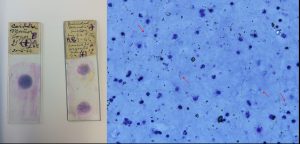1. Neandertal genetics
We are analysing different individuals from El Sidrón site in Asturias, Spain. This is a family group of at least 13 Neandertal individuals that became accidentally accumulated in a single, synchronic event within a subterranean karstic system. El Sidrón offers the unique opportunity of launching a genomic project for understanding the diversity and kinship relationships within a contemporaneous Neandertal social group. We are also searching for additional Neandertal remains to be analysed.
2. European genomic prehistory
We are interested in reconstructing the main cultural horizons and evolutionary shifts of the European prehistory by analyzing past human genomes from different periods –with a special focus on the Iberian peninsula-, including the Mesolithic-Neolithic transition and later periods such as the Cooper and the Bronze Age.
The Mesolithic-Neolithic transition
The introduction of farming into Europe by Near Eastern migrants was a major demographic transition that involved a substantial replacement of the pre-existing hunter-gatherer populations as well as new adaptive challenges. We have recently retrieved the first pre-agricultural, modern human European genome, that of La Braña-Arintero in León, Spain, dated to about 7,000 years ago. We discovered that Mesolithic individuals carried ancestral variants in pigmentation genes (in addition of having blue eyes) and derived variants in many genes associated to immunological farming challenges.
Cardium Pottery Culture
Around 5,900 years BCE, an archaeological culture, named Cardial for the impressed decorations made on the pottery with the serrated edge of cardium shells, spread along the central and western Mediterranean basin. Cardial culture is found in coastal locations of northwestern Italy, Mediterranean France and Spain, and also Portugal. The rapid expansion of this culture, as suggested by radiocarbon dates, and its restricted coastal locations have been interpreted as the result of maritime pioneer colonization. We are currently analysing Cardium pottery samples with the goal of retrieving a complete genome from this early Neolithic Mediterranean migration and compare it to other, central European Neolithic expansions. We have generated a complete genome (1.1x) from a 7,400 year-old individual from Cova Bonica in Vallirana (Barcelona) as well as mitochondrial data from other sites from Portugal and Spain.
The Bell Beakers
We are also analysing Bell-Beaker samples for reconstructing the dynamics of the expansion of this archaeological horizon and its role in the shaping of modern European genetic diversity. The Bell Beaker complex, characterized by distinctive bell-shaped vessels -hence the name- related to the drinking of special beverages and also associated to war and hunting objects, is one of the most studied and controversial archaeological horizons. It emerged in southwestern Europe around 2,900 years cal BCE and quickly spread to north and central Europe, reaching the North European Plain and the British Isles where it persisted for about 1,000 years. Its geographic scale is unprecedented in the history of the European continent, but its significance and dynamics is the subject of much debate, ranging from those supporting a movement of people to those that consider the BB expansion a diffusion of ideas. In any case the BB culture represents a social turning point, marked by the formation of social elites. This project was done in collaboration with David Reich’s Lab.
The genetic history of the Iberian Peninsula
We aim to reconstruct the past, complex history of human populations at the Iberian Peninsula, from the Mesolithic to recent times. We are currently analysing Mesolithic, Neolithic, Chalcolithic, Bronze Age, Iberian, Roman, Visigoths and Middle Age samples from sites around all Spain and Portugal. This work is done in collaboration with David Reich’s Lab.
3. Ancient Pathogens
We are investigating how ancient pathogens shaped Europeans’ genomic diversity. We are currently studying the malaria parasites eradicated from Europe during the 20th century, where they were endemic for centuries. The evolutionary histories of Plasmodium vivax and Plasmodium falciparum, the predominant malaria-causing parasites, remain controversial, in part because of the lack of genetic evidence from European strains of the parasites. We have retrieved genetic data for these European strains from old microscope slides. The slides, dating from the 1940s, contained blood drops from three malaria patients who lived in the Ebro Delta in Spain. The analysis of the ancient Plasmodium genomes has been published at PNAS (2016), MBE (2019), and Microbial Genomics (2019).
4. Extinct Species
We are currently analysing extinct species and trying to retrieve their complete genomes to understand processes of adaptation, evolutionary history and also extinction dynamics. We have retrieved so far the first complete genome of the Carolina parakeet that was published in Current Biology in 2020 (cover).







